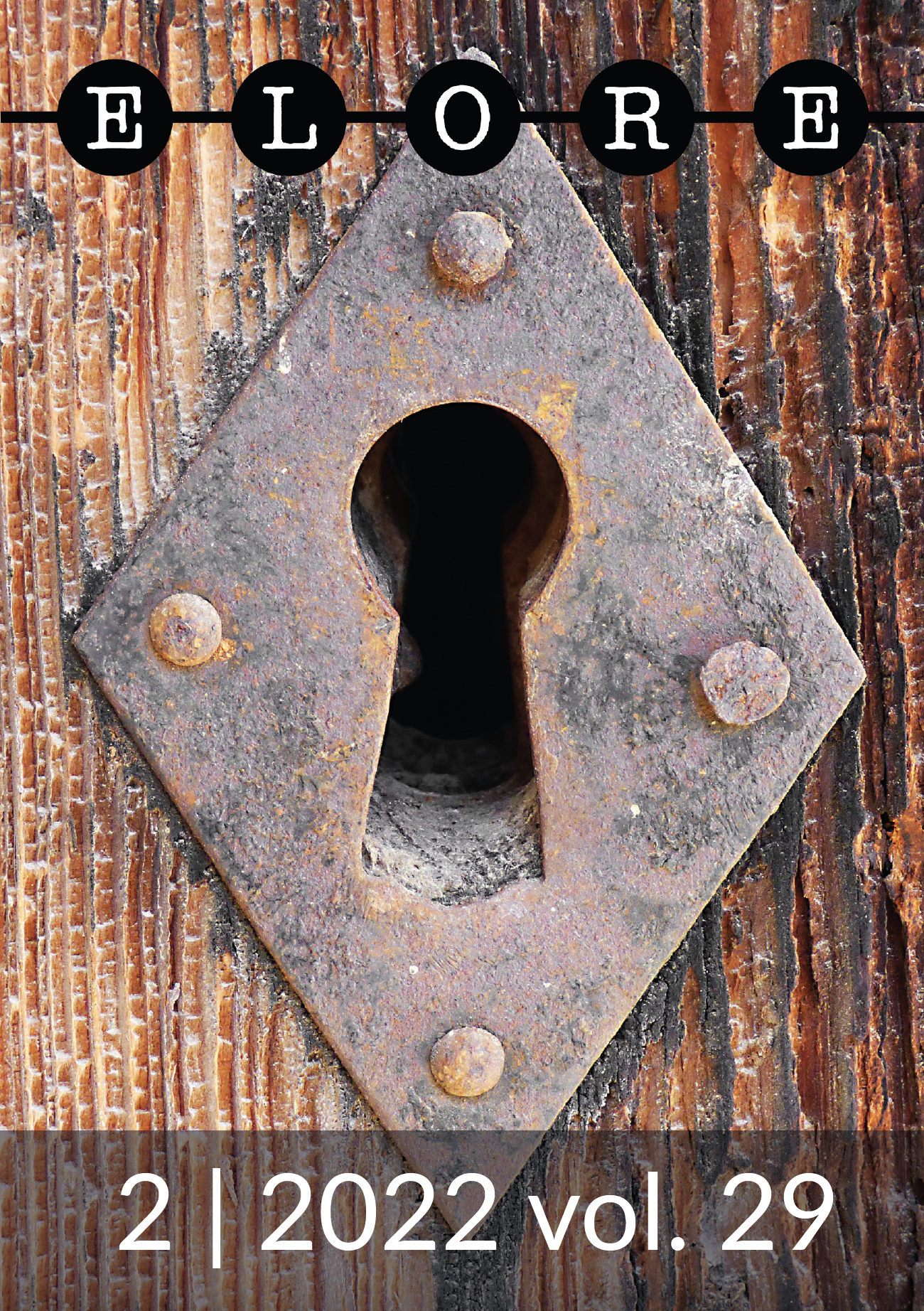Murder chants and other sorrow
Emotions and emotional communities in oral-written sources
DOI:
https://doi.org/10.30666/elore.121513Keywords:
tunteet, tunneyhteisö suullis-kirjalliset aineistotAbstract
The article examines what kind of emotional expressions of sorrow and worry appeared in broadsides, the Kanteletar as well as rhyme couplets and written poetry based on them in the long 19th century. The analysis is particularly targeted to the emotional community and its formation in oral-written sources. One of the main questions of the article is of what kind of shared emotions or emotional communities can be specified from the sources in question. Further, whose emotions are present and how emotional behavior of the peasant is evident or to what extent literary representations repeat or – as it might be – disclaim established perceptions of Finnish emotional culture.
In respect of broadsides the focus is on experience of emotion in which content, music, and performance itself play a crucial role. Besides, the emotional community based on writers and consumers of the broadsides are scrutinized as well as what role the community had on expression of emotions. In analyzing the Kanteletar by Elias Lönnrot the question is of manipulation of oral sources into written form: how the oral songs of sorrow and worry and their emotional atmosphere are modified to create literary representation and how Lönnrot generated a specific emotional community for the readers. The ideals of the 19th century are of importance to the analysis. Rhymed couplets and written art poetry based on them of the late 19th century are examined by focusing on the contradiction of the emotional expression by the singer of the poetry and community. The unity of the emotional community is questioned in these texts.
The analysis of different kinds of oral-written texts illuminates not only the expressions of emotions and emotional community in literature and by the elite but by the peasant. The idea of shared emotions varies and is present more clearly in some of the analyzed texts than the others. The article brings new perspectives on textualization processes of emotions and deepens our understanding of the emotional communities of the peasant by emphasizing silenced emotions and incongruity of emotional experiences.

Downloads
Published
How to Cite
Issue
Section
License
The journal follows Diamond Open Access publishing model: the journal does not charge authors and published texts are immediately available on the Journal.fi service for scientific journals. By submitting an article for publication on Elore, the author agrees, as of September 2024, that the work will be published under a CC BY 4.0 licence. Under the licence, others may copy, transmit, distribute and display the copyrighted work and any modified versions of the work based on it only if they attribute the licence, the original publication (link or reference) and the author as the original author. Any modifications made must be acknowledged.
Copyright of the texts remains with the authors, and self-archiving (Green OA) of the published version is allowed. This also applies to texts published before September 2024. The Green OA publication must include Elore's publication details.
The metadata for published articles is licensed under Creative Commons CC0 1.0 Universal.





